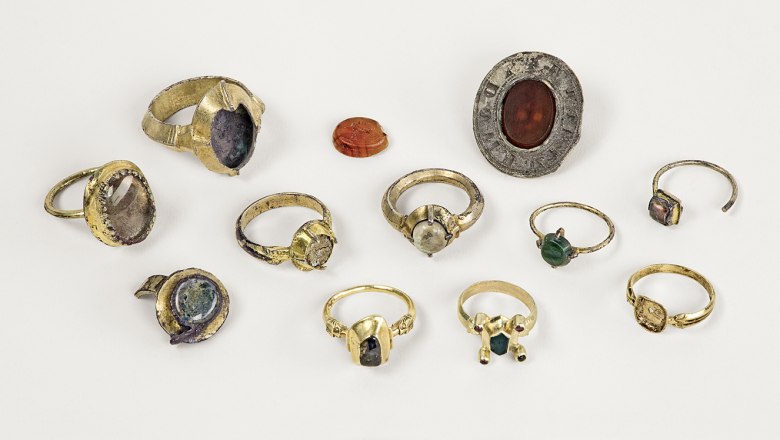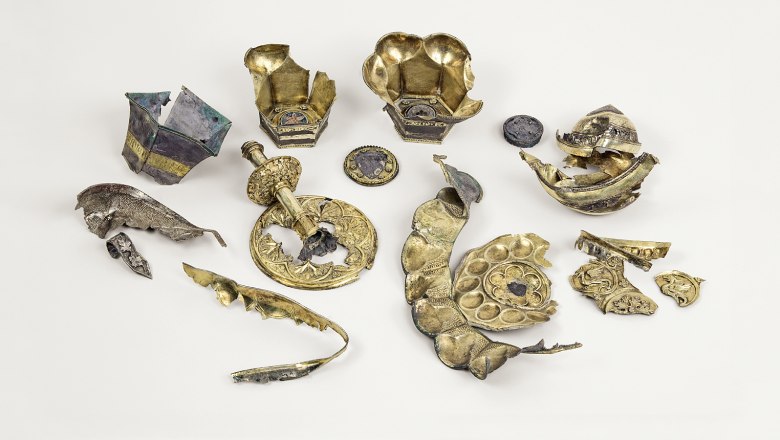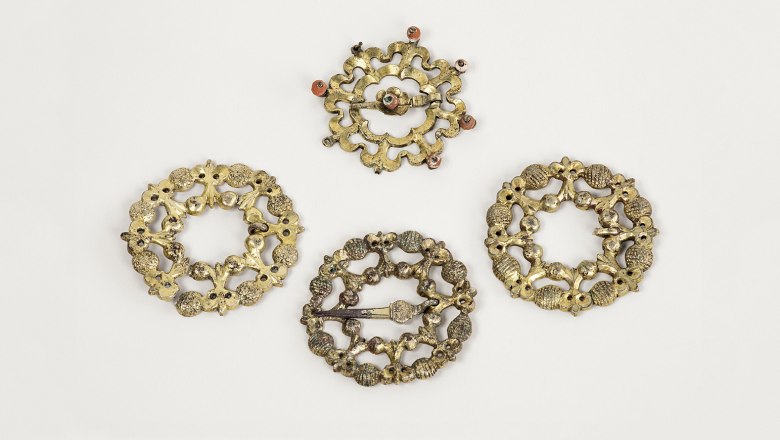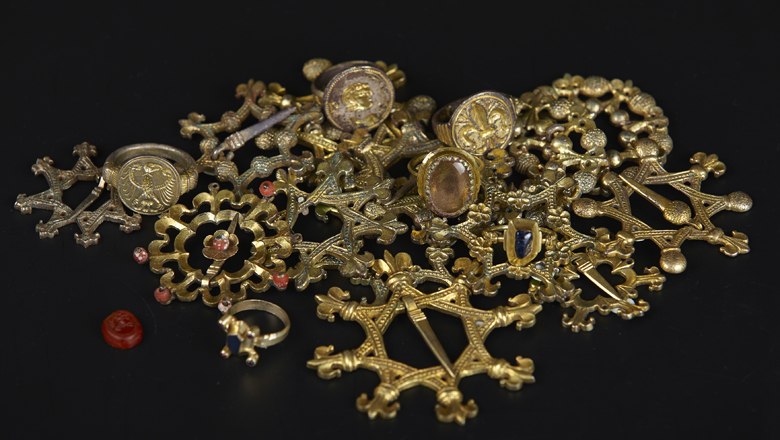The Wiener Neustadt hoard
Description
By chance, a garden owner discovered a silver and gold treasure from the late Middle Ages, which came from the court environment.
In 2007, numerous metal objects were found at a shallow depth while digging a biotope in a garden in Wiener Neustadt. Curiously, the finder initially kept the objects in the cellar and only handed them over to the Federal Monuments Office three years later in a cleaned condition.
Valuable pieces from the court environment
The discovery from the Wiener Neustadt garden turned out to be Austria's best-known late medieval treasure trove. It comprises 149 objects or fragments with a total weight of 2,290 grams. Its components can be divided into five groups: Rings, clasps, other costume components, vessels and spoons. Rings and clasps make up the majority. Many pieces, mostly fire-gilded silver objects, are sumptuously and elaborately crafted and their symbolism points to a courtly environment. The finds can be dated to the mid to late 14th century. The objects were probably originally in a wooden box, and iron parts were allegedly still present when they were found.
From the nobility to precious metal dealers
The first owners of the individual objects used the valuable components of clothing and tableware as part of their social identity. A coat of arms medallion on a cup refers to the Vierdung family of Wiener Neustadt aldermen. Traces of dismantling on some objects suggest that a goldsmith acted as an intermediate owner who collected scrap metal for further use. The last owner was probably a precious metal dealer. By burying the objects in front of the tollbooth outside the city, he may have wanted to circumvent the strict regulations on trading in broken silver. It is not known why this last owner first hid the treasure and then did not dig it up again. But as there is no known historical event in Wiener Neustadt from the 14th and early 15th centuries that could have led to such behavior, the owner's personal problems were probably the decisive factor




